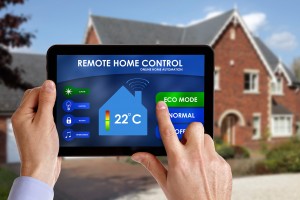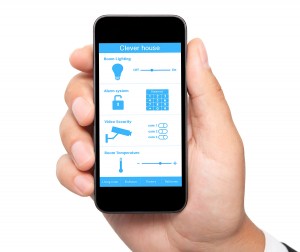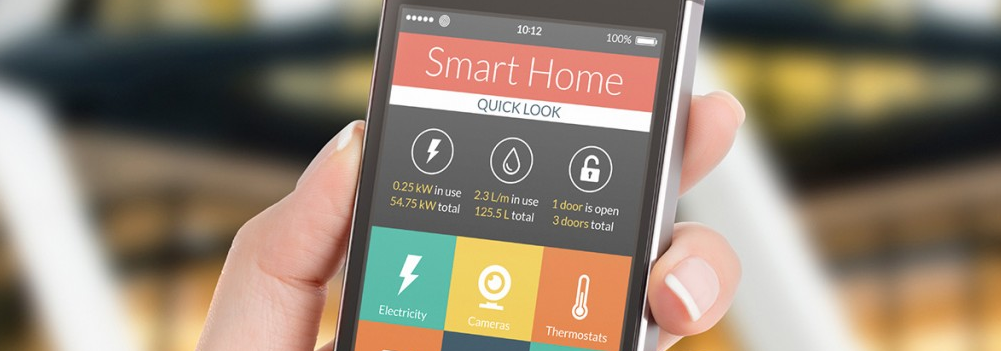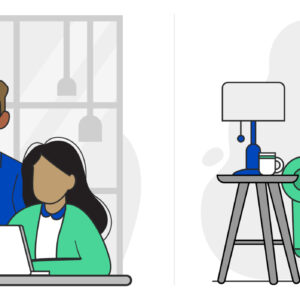The Internet of Things in the Smart Home
Last Updated on August 16, 2021 by Bennett Floyd
The Internet of Things (IoT) describes the network of Internet-connected devices — including everything from smartphones, vehicles, and refrigerators — that sense and communicate with their environment, and each other. There are 6.4 billion IoT devices today, and Gartner predicts that number will reach 20.8 billion by 2020, largely due to growth in the consumer market.
The increasing popularity and value of smart homes shows that IoT devices are important to consumers. Though some consumers have concerns about the security of the Internet of Things, that doesn’t seem to be slowing down the industry’s growth.
The Internet of Things in Smart Homes
 While smart home gadgets related to lighting and security are popular, those are only two of the many ways the Internet of Things can be used in smart homes.
While smart home gadgets related to lighting and security are popular, those are only two of the many ways the Internet of Things can be used in smart homes.
- Lighting: Automating lights in a home is a helpful way to save energy and keep your home safe. Homeowners can schedule their Philips Hue lightbulbs to wake them up in the morning, turn on intermittently while they’re on vacation, and dim during the day when natural light is abundant.
- Security and Access: Security concerns are a common reason homeowners look into smart home products. The Canary home security system’s video, motion, and audio sensors can monitor your home — and alert you through a device on your smartphone app when you’re away.
- HVAC: It can be difficult to maintain a consistently comfortable temperature in all rooms of a home, which is where the ecobee3 comes in. This smart thermostat uses remote sensors to measure the temperature in every room of a home — making sure you’re always comfortable.
- Entertainment: Entertainment-related IoT devices have changed the way people watch television. Chromecast connects users’ smartphones with their televisions to make streaming shows and movies easy, convenient, and personalized.
- Home Healthcare: From remote doctor’s appointments to wearables that monitor chronic health conditions, IoT devices for healthcare help people live more comfortable lives. Adamm helps people with asthma monitor their condition through a wearable smart device that tracks symptoms and sends a notification if they are abnormal.
- Smart Kitchen: Finding time to cook fresh meals each day can be difficult, which is why IoT devices in the kitchen are growing in popularity. The WeMo-enabled Crock-Pot allows cooks to remotely adjust the temperature and cook time — and ensure that dinner is ready when they arrive home.
Benefits of the Internet of Things
 As the IoT can be used across all sectors — government, personal, business, and more — the benefits are wide-ranging. At home, consumers enjoy everything from saving money to adding convenience.
As the IoT can be used across all sectors — government, personal, business, and more — the benefits are wide-ranging. At home, consumers enjoy everything from saving money to adding convenience.
- Save Money: The IoT provides consumers with an opportunity to save energy and cut costs on their utility bills. In the long run, adding IoT devices to a home can also help provide a return on investment by increasing its value and making it easier to sell.
- Increase Safety: Smart devices can help protect families both young and old. Connected security systems can help younger families monitor their homes and keep kids safe. Similarly, the IoT can help older people live without assistance in their homes by providing features for safety and convenience.
- Prevent Damage: One of the primary benefits of IoT devices is that they can monitor your home while you are away. This can help homeowners feel more secure in knowing that even if a pipe breaks or the oven is left on, they will be notified and can quickly respond to the situation.
- Add Convenience: Convenience and a personalized living space are important. The IoT can remind homeowners when they are running low on household products, and a smart garage door can give homeowners peace of mind.
Concerns About the Internet of Things
Though there are many benefits to the IoT, consumers also have concerns about connecting so many smart devices to their lives.
- Privacy: Part of the reason the IoT serves consumers so well is because it tracks habits and interests to inform future decisions — whether to regulate household temperature or recommend television shows. However, many users remain concerned about what can be done with the data their IoT devices collect and whether or not their information is shared with third parties.
- Security: Though consumers enjoy the convenience of the IoT, they are not willing to sacrifice their security. The primary security risk is that hackers will be able to breach the Cloud services that manage customer data — which many have already done. It’s important for users to be aware which manufacturers have the highest security standards and which ones may be cutting corners.
- Interoperability: Another issue is interoperability. Consumers may face this challenge as they add more IoT devices to their smart homes — and a typical household is expected to contain more than 500 smart gadgets by 2022. Consumers desire a single hub where they can manage all of their devices. Manufacturers that focus on shared standards and integration will be the ones to capture consumer interest and loyalty.
Though consumers have concerns with the Internet of Things, the demand for smart home devices continues to grow. If someone you know is interested in purchasing IoT devices for their home, share this with them so they can learn more about the types of devices available and purchase from a security-minded manufacturer. A reliable and fast High-Speed Internet connection is highly recommended as you and your home become more connected through the Internet of Things. To ensure you have the right speeds or upgrade your current service call 855-640-4510 to see what CenturyLink offers in your area. See if you can consolidate some of your home services with a CenturyLink Internet bundle for even more savings!







